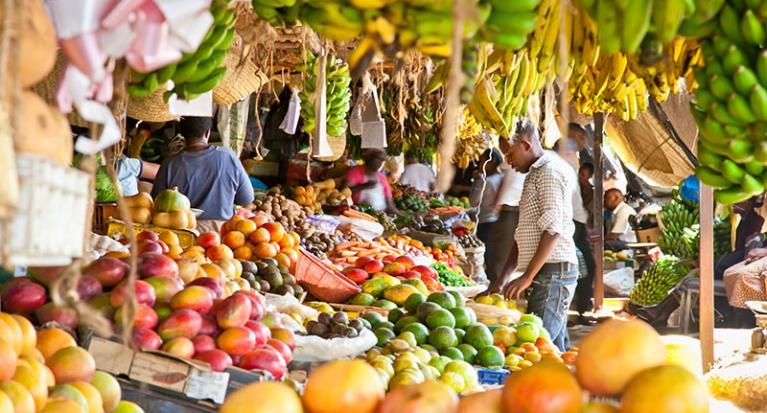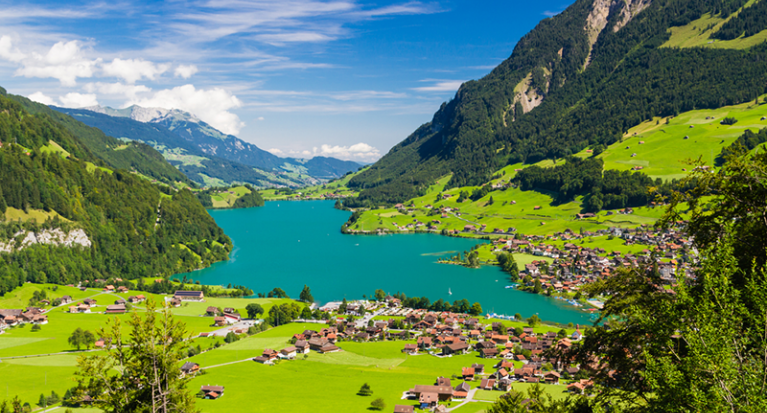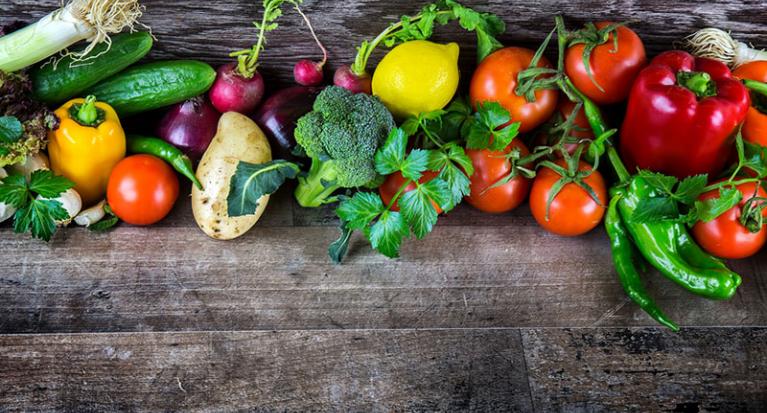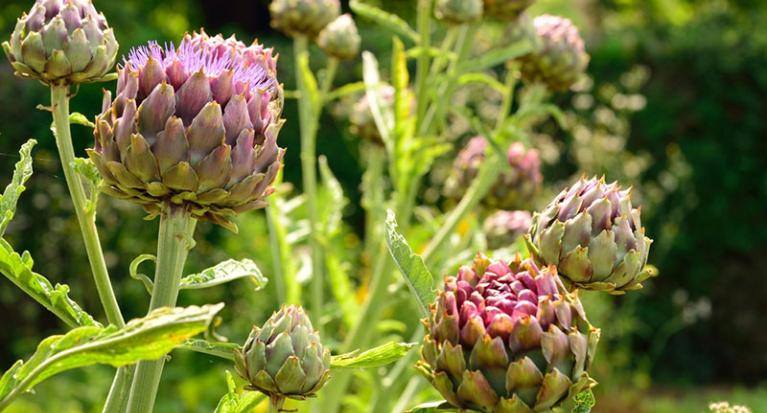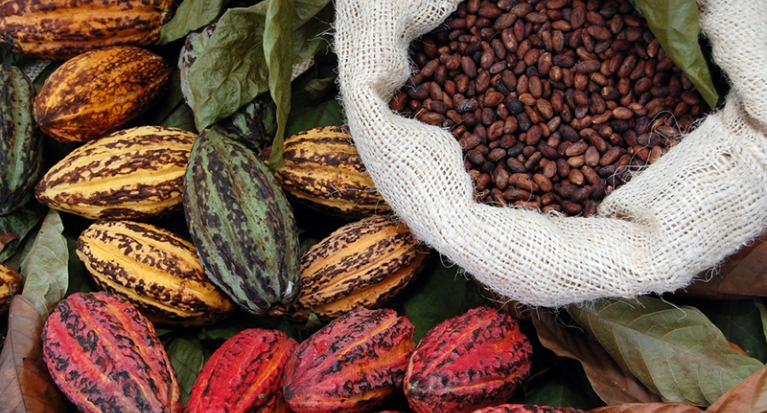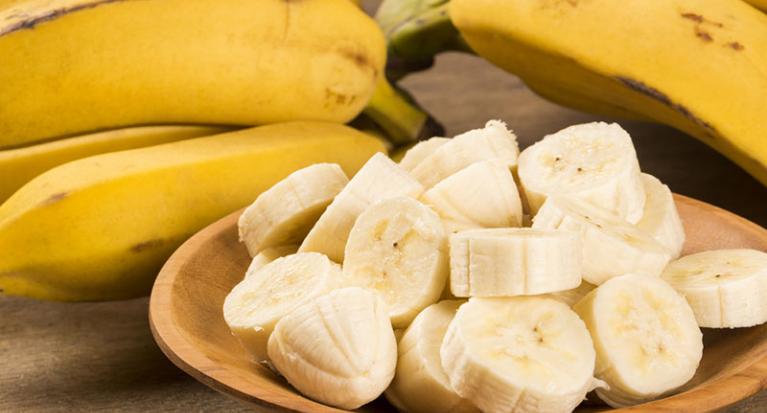The Delights of Madagascan Cuisine
A country, a continent, a people with a thousand facets
©Shutterstock/Pierre-Yves Babelon" data-slide="http://www.ealimentarium.ch/sites/default/files/emag4a_d4_madagascar_97574318.jpg"/>
Sakay is a chilli-based paste used for seasoning dishes. Chillis at Ambilobe market in Madagascar.
©Shutterstock/Pierre-Yves Babelon
Situated off the coast of Africa, Madagascar, nicknamed “La Grande Ile”, is the largest of the islands in the south-west Indian Ocean and the fifth-largest in the world, with an area of 592,000 km2. This vast territory offers a wide array of resources, the most famous of which is rice. Rice-growing only dates as far back as the 19th century, and in the capital of Antananarivo, five types of rice are available on the market, distinguished by colour, size and origin. Traditionally, Madagascans mainly consumed yams, as well as manioc and sweet potato. Thanks to the temperate climate in the highland areas, almost all fruits and vegetables are grown there, including carrots, cabbage, tomatoes, green beans and asparagus. In addition to tropical fruits, apples, pears, peaches, apricots and even strawberries can be found in season between December and January. Cattle farming is very common, particularly that of zebu, although their milk is rarely consumed. Sea fishing and freshwater fishing are also an important source of food.
Diverse cuisine
Madagascan cuisine reflects the island’s population, with differences between coastal regions and highland areas. Each of the eighteen ethnic groups has taken care to preserve particular traditions, not to mention foreign influences such as those of France, India or China. Initially discovered by the Portuguese in 1500, the island was inhabited by the French from the 17th century onwards, and did not gain independence until 1960. An Indonesian community settled in the centre of the island, with Africans and Arabs from Yemen on the coasts. Part of the population is also made up of those with Chinese and Indian descent.
A typical Madagascan dish consists of a plate of rice (vary), served with an accompaniment (laoka). The two “national” accompanying dishes are romazava, a meat stew with green leafy vegetables that have a very distinctive taste (brèdes) and ravitoto, stewed pork with shredded manioc leaves. Other specialities include eel with pork, pork with butter beans and kitoza (dried and smoked meat or fish). In general, Madagascan dishes do not use a lot of seasoning. Pepper, saffron and herbs are most often used for flavouring, as well as ginger, clove and nutmeg. Salt is not used in Madagascan cooking, and neither are sauces – the general preference is instead to serve sakay (a chilli-based paste) or lasary (pickled mango, lemon or carrot steeped in vinegar or curry oil).
Aside from the French pastries that are mainly found in the towns, desserts mostly consist of fruit. Fresh sugar cane is also very popular. Rice water (ranopango) is the most affordable drink, and is traditionally prepared by boiling water over a layer of browned (burned) rice, before straining. Served warm, the amber-coloured water is a healthy refreshment, but may taste bitter if the rice has been burned for too long.
Meals in Madagascar
Farming families currently consume three meals a day, whereas previously it was only two. In the home, meals are served in a simple fashion, with mats placed on the ground in the absence of tables. Large plates of rice are accompanied by various salad bowls containing the accompaniments for that day. Soup spoons are used for cutlery, while Madagascans of Indian and Yemeni origin tend to eat with their fingers. Snacks are sold at all hours in the streets of towns, including kebabs (masikita), meat and vegetable fritters (sambo), grilled manioc and rice cakes (mofo gasy).
Are you ready to enjoy a Madagascan meal and discover some new culinary delights?
Further references
CHAN TAT CHUEN, William, 2010. Ma cuisine de Madagascar. Recettes, saveurs et culture alimentaire au pays des lémuriens. Jean-Paul Rocher Editeur.
CHASTANET, Monique, FAUVELLE-AYMAR, François-Xavier, JUHE-BEAULATON Dominique, 2002. Cuisine et société en Afrique. Histoire, saveurs, savoir-faire. Paris : Karthala.
ESPAGNE-RAVO, Angeline, 2005. Ma Cuisine malgache. Aix-en-Provence : Edisud.
SPAGNOLI-BEGUE, Corine, 2007. Cuisine des Îles de l’Océan Indien. Aix-en-Provence : Edisud.
TOUSSAINT-SAMAT, Maguelonne, 1971. La Cuisine Rustique. Afrique noire. Madagascar. R. Morel.
DOSSIER Delicious discoveries |
Traditional food
Traditional food results from a skill or particular technique with very old origins. It may also be a special way of serving a local product. It is often women who keep these traditions alive and pass them down from one generation to the next.
Regional dishes do...

